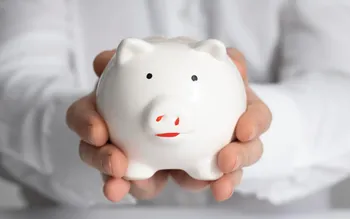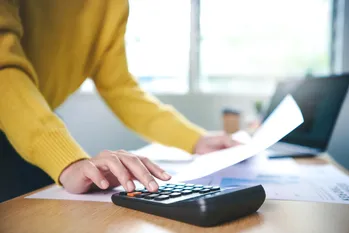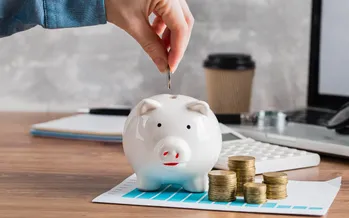In life, unexpected events can occur at any time. Whether it's a medical emergency, loss of income, or home repairs, these situations can lead to financial strain that can leave you struggling to make ends meet. That's where an emergency fund comes in. In this article, we'll explore what an emergency fund is, the types of emergencies it can cover, how much you should have, strategies for building one, and tips for managing it.
I. Introduction
An emergency fund is a savings account that's specifically set aside to cover unexpected expenses. It's essential because it provides a financial safety net during times of crisis, helping you avoid accumulating debt or draining your regular savings account. According to a survey by Bankrate, over 60% of Americans don't have enough money saved to cover an unexpected $1,000 expense. This highlights the importance of having an emergency fund and the need for financial education on this topic.
II. Types of Emergencies that Require an Emergency Fund
While emergencies can take many forms, there are a few common situations where an emergency fund comes in handy:
A. Medical emergencies: This could include unexpected hospital bills, surgeries, or medical treatments that aren't covered by insurance.
B. Loss of income: A sudden job loss, reduction in hours, or illness that prevents you from working can put a strain on your finances. An emergency fund can provide a buffer during these times.
C. Home repairs or unexpected bills: Unexpected expenses such as water damage, car repairs, or appliance breakdowns can arise. Having an emergency fund can prevent you from incurring high-interest debt or delaying payments, resulting in late fees and penalties.
III. How Much Should You Have in Your Emergency Fund?
The recommended amount for your emergency fund depends on several factors such as your income, expenses, and job stability. As a general rule, aim to have 3-6 months' worth of living expenses set aside. This covers essential items such as rent or mortgage payments, utilities, groceries, transportation, and insurance premiums. If you have a stable job with consistent income, a smaller emergency fund may be sufficient. On the other hand, if your job is unstable, you may need to increase your emergency fund to cover a longer period of time without an income.
IV. Strategies to Build an Emergency Fund
Building an emergency fund can seem daunting, but here are some practical strategies that can help:
A. Create a budget and stick to it: This helps you identify where your money is going and create a plan for saving. It also allows you to adjust your expenses as needed to free up more funds for your emergency fund.
B. Automate savings by setting up automatic transfers: This ensures that a portion of your income goes directly into your emergency fund without the need for manual input or decision-making.
C. Cut unnecessary expenses: Look at areas where you can reduce expenses such as dining out, subscriptions, or entertainment. You may be surprised at how much these small changes add up over time.
V. Consequences of Not Having an Emergency Fund
Failing to have an emergency fund can lead to serious consequences such as:
A. Debt accumulation due to high-interest loans or credit card debt: Borrowing money at high-interest rates can compound interest, resulting in significant debt that's difficult to pay off. This can negatively impact your credit score and financial future.
B. Delayed payment of bills leading to late fees and penalties: Missing payments on bills such as rent, utilities, or insurance premiums can result in late fees and penalties. This can also negatively impact your credit score and result in additional interest charges.
VI. Tips for Managing Your Emergency Fund
Managing an emergency fund requires discipline and consistency:
A. Keep it separate: Consider opening a separate savings account specifically for your emergency fund to prevent mixing funds or accidentally using them for other purposes.
B. Review and adjust regularly: Regularly review your budget, income, and expenses to ensure that your emergency fund is still sufficient. Adjust as needed based on changes in your financial situation.
C. Avoid using it for non-emergency purposes: While it may be tempting to use the funds for non-essential items such as vacations or home improvements, this defeats the purpose of an emergency fund. Stick to using it only for emergencies and unexpected expenses.
FAQ Section
Q: How can I determine how much money I should save in my emergency fund?
A: As a general rule, aim to have 3-6 months' worth of living expenses set aside. This covers essential items such as rent or mortgage payments, utilities, groceries, transportation, and insurance premiums. If your job is unstable, you may need to increase your emergency fund to cover a longer period of time without an income.
Q: What are some strategies I can use to build my emergency fund?
A: Here are three practical strategies that can help:
- Create a budget and stick to it: This helps you identify where your money is going and create a plan for saving. It also allows you to adjust your expenses as needed to free up more funds for your emergency fund.
- Automate savings by setting up automatic transfers: This ensures that a portion of your income goes directly into your emergency fund without the need for manual input or decision-making.
- Cut unnecessary expenses: Look at areas where you can reduce expenses such as dining out, subscriptions, or entertainment. You may be surprised at how much these small changes add up over time.
Q: What are the consequences of not having an emergency fund?
A: Failing to have an emergency fund can lead to serious consequences such as:
- Debt accumulation due to high-interest loans or credit card debt: Borrowing money at high-interest rates can compound interest, resulting in significant debt that's difficult to pay off. This can negatively impact your credit score and financial future.
- Financial strain: Unexpected expenses such as medical bills, car repairs, or job loss can put a severe strain on your finances if you don't have an emergency fund to cover them. This can lead to missed payments, late fees, or even bankruptcy.
- Forced use of savings for non-emergency purposes: While it may be tempting to use the funds for non-essential items such as vacations or home improvements, this defeats the purpose of an emergency fund. Stick to using it only for emergencies and unexpected expenses.
Q: How can I manage my emergency fund once I've saved up enough money?
A: Managing an emergency fund requires discipline and consistency:
- Keep it separate: Consider opening a separate savings account specifically for your emergency fund to prevent mixing funds or accidentally using them for other purposes.
- Review and adjust regularly: Regularly review your budget, income, and expenses to ensure that your emergency fund is still sufficient. Adjust as needed based on changes in your financial situation.
- Avoid using it for non-emergency purposes: Stick to using it only for emergencies and unexpected expenses. Remember that an emergency fund is meant to provide a safety net, not a source of extra money for discretionary spending.
Conclusion
In conclusion, building and managing an emergency fund is a critical part of financial planning. By following these strategies and staying disciplined, you can create a buffer against unexpected expenses and avoid unnecessary debt or financial strain. Remember to review and adjust your emergency fund regularly based on changes in your income, expenses, and job stability.











